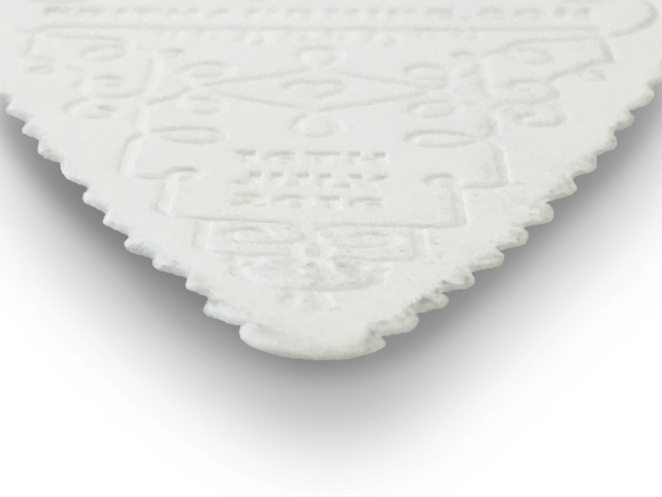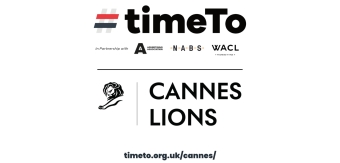In the third decade of the 21st century, screens are everywhere and that’s proven quite destructive for traditional print media. Also factor in the world’s shift towards sustainable practices and it would appear as if the age of tangible media is largely behind us. Tell that, however, to the 65% of people who feel they gain a deeper understanding of a story through print media and the 51% who trust print media above all other sources.
It can be difficult to comprehend how print has continued to hold on, particularly in a world where some of the world’s most famous magazines have become either mostly or entirely digital. The tactile sensation of holding a magazine, the crispness of a newly printed book, and the visual appeal of a well-designed poster, however, still evoke a sense of nostalgia and tangibility that digital media lacks.
This resurgence of print is more, however, than a sentimental longing for the past. It’s a reaffirmation of the enduring value of “things” in a digitally saturated world.
Sensory Engagement and Tangible Connection
One of the most compelling reasons for the resurgence of print is the unique sensory experience it offers. Digital media engages primarily the senses of sight and sound, whereas print media involves touch, sight, and even smell. The texture of the paper, the weight of a book, and the scent of ink provide a multisensory experience that can enhance emotional connection and memory retention.
Neurological studies suggest that reading on paper can improve comprehension and recall compared to reading on a screen. The physicality of print media aids in spatial orientation, allowing readers to better navigate and remember content. This tactile interaction creates a deeper cognitive engagement, making the information more memorable and meaningful.
Aesthetic Appreciation and Design
Print media is often seen as a canvas for art and design. The quality of the paper, the choice of typography, and the overall layout contribute to an aesthetic experience that digital formats struggle to replicate. High-quality print publications are akin to art objects, cherished not just for their content but for their craftsmanship.
The resurgence of print is also evident in the growing popularity of independent magazines and zines. These publications often emphasize innovative design, unique voices, and niche topics that cater to specific audiences. The tangible nature of these magazines makes them collectible items, valued for their rarity and artistic expression. In a world where digital content is often ephemeral, print media offers a lasting, tangible artifact.

Terry Shortland
Trust and Credibility
In an era of fake news and misinformation, trust in media sources has become paramount. Print media, with its established processes of editorial oversight and fact-checking, is often perceived as more reliable than its digital counterparts. The permanence of print creates an implicit sense of accountability; once something is printed, it cannot be easily altered or deleted.
This trust extends to advertising as well. Studies have shown that consumers view print advertisements as more credible and engaging than digital ads. The tactile nature of print can enhance the perceived value of the advertised product or service, leading to higher engagement and retention rates.
The Desire for a Balanced Media Diet
The constant barrage of digital notifications, updates, and alerts can lead to information overload and digital fatigue. Many people are seeking a more balanced media diet, where print plays a crucial role. Reading a physical book or magazine can be a welcome respite from screen time, offering a more focused and immersive experience.
Print media encourages a slower, more deliberate consumption of information. Unlike the rapid scrolling and skimming often associated with digital content, print invites readers to engage deeply and thoughtfully. This slower pace can foster critical thinking and a more nuanced understanding of complex topics.
Sustainability and Environmental Considerations
The environmental impact of print media has been a topic of concern, but recent advancements in sustainable printing practices are changing the narrative. Many publishers are now using recycled paper, eco-friendly inks, and sustainable production methods to minimize their environmental footprint. Moreover, the ephemeral nature of digital media, with its constant need for new devices and infrastructure, also has significant environmental costs.
Supporting sustainable print practices can contribute to a more eco-friendly media landscape. Consumers are becoming increasingly aware of the environmental implications of their media choices, and many are opting for sustainably produced print media as a way to reduce their digital carbon footprint.
Daniel Bonner
The Role of Print in Education
Print media continues to play a vital role in education. Physical textbooks, workbooks, and printed educational materials provide a reliable and distraction-free learning environment. Many educators and parents recognize the benefits of print in supporting literacy and learning, particularly for young children.
The resurgence of print in education is also seen in the growing popularity of printed planners, journals, and notebooks. These tools help students and professionals organize their thoughts, manage their time, and enhance productivity. The act of writing by hand has been shown to improve memory and cognitive function, further highlighting the enduring value of tangible media.
The Future of Print Media
The resurgence of print does not imply a rejection of digital media but rather a harmonious coexistence. Print and digital media each have their strengths, and their combined use can create a more robust and diverse media ecosystem. Publishers are increasingly adopting a hybrid approach, offering both print and digital versions of their content to cater to different preferences and needs.
Innovations in print technology are also shaping the future of tangible media. Enhanced printing techniques, augmented reality (AR) integrations, and personalized print-on-demand services are expanding the possibilities of what print media can offer. These advancements are ensuring that print remains relevant and appealing in the digital age.
The resurgence of print media is a testament to its enduring value and adaptability. In a world where digital media dominates, the tactile and timeless nature of print reminds us of the ineffable power of tangible media to inform, inspire, and help us feel connected to the work behind the product.
Another Creative Opinion
Ambra Fridegotto, Fedrigoni Paper
In an era dominated by digital media, the resurgence of print is both resilient and welcomed. Despite the convenience and accessibility of digital formats, there remains a significant and growing appreciation for tangible media.
Print offers a sensory experience that digital media cannot replicate. The tactile feel of paper, the smell of ink, and the visual appeal of high-quality print all contribute to a more immersive and satisfying experience.
For instance, luxury packaging often relies on the tactile and visual qualities of premium paper to create a memorable unboxing experience. Independent publishers and artists are embracing print to create unique, high-quality works that stand out in an oversaturated market.
The tangible nature of print allows for creative expressions through various formats, binding styles, and paper types, offering a distinct aesthetic value that digital cannot match.
Additionally, the advent of digital printing has revolutionized the industry. This technology enables shorter print runs, quicker turnaround times, and flexibility, enabling brands to respond rapidly to market trends and promotional events.
The capabilities have transformed how businesses engage with customers, offering a more targeted and interactive experience. One of the standout features of digital printing is variable data printing (VDP) which allows for customization of text, images, and graphics on each individual copy, making personalized marketing materials, direct mail, and unique book editions possible.
The resurgence of print media is a testament to its enduring value, relevance, and ongoing evolution. The tangible experience, permanence, and artistic potential of print continue to captivate audiences, ensuring its place in our increasingly digital world.





